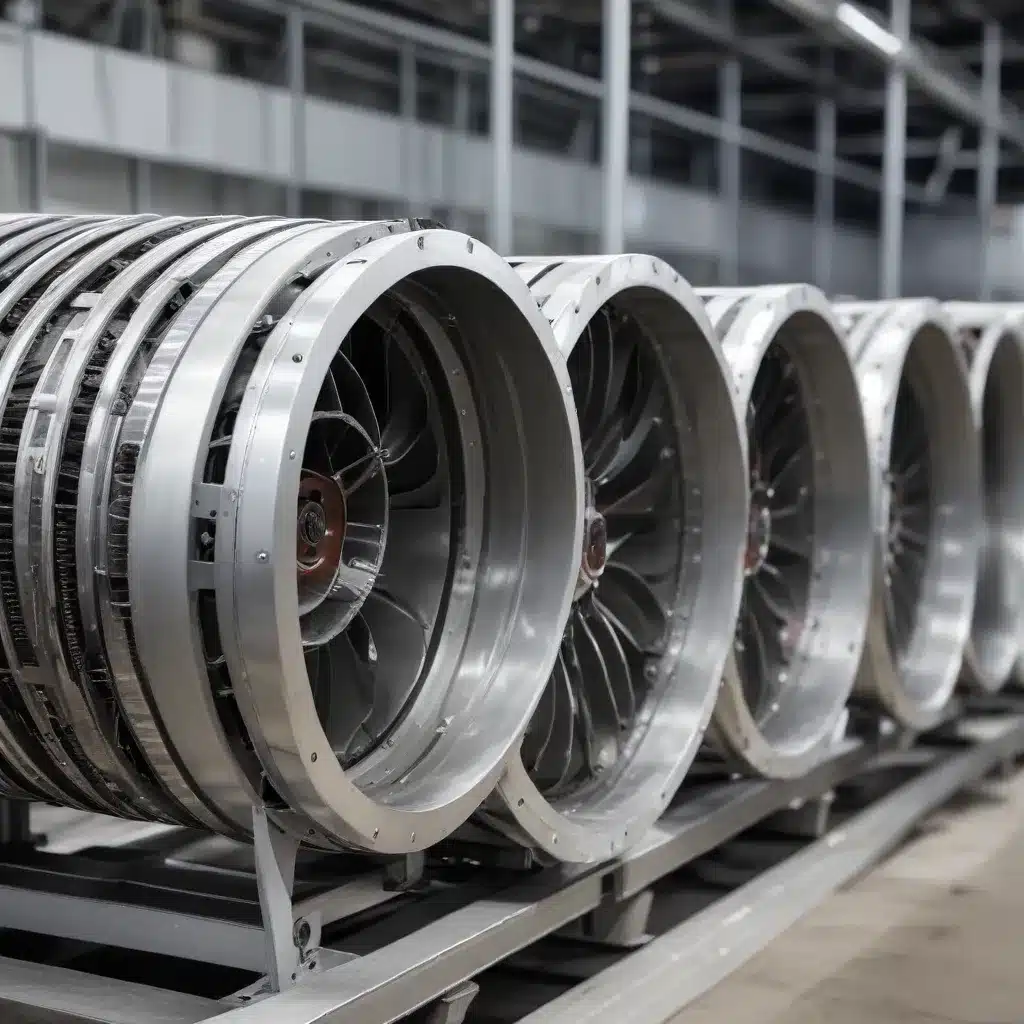
Prioritizing Sustainability in Heat Exchanger Design and Engineering
As a seasoned expert in air-cooled heat exchangers, I’ve witnessed the industry’s growing emphasis on sustainable manufacturing practices. In this comprehensive article, we’ll explore the latest techniques and innovations that enable the production of environmentally-friendly heat exchangers – from material selection and energy-efficient processes to maintenance strategies and innovative applications.
Sustainable Material Choices for Heat Exchangers
The selection of materials plays a crucial role in the environmental impact of heat exchangers. Steel has long been a popular choice due to its durability, corrosion resistance, and recyclability. As the useful life of a heat exchanger comes to an end, the steel components can be easily sent to steel recyclers, where the scrap material is melted down and reused to create new steel products. This closed-loop approach aligns with the principles of a circular economy, minimizing waste and conserving natural resources.
In addition to steel, aluminum is another material that has gained traction in sustainable heat exchanger manufacturing. Aluminum’s inherent lightweight properties can contribute to reduced energy consumption during transportation and installation. Furthermore, the recycling of aluminum is highly efficient, with the metal retaining its original properties even after multiple recycling cycles.
Beyond the primary metal components, heat exchanger manufacturers are also exploring the use of environmentally friendly packing materials. These materials, which can be easily recycled, help ensure that the entire heat exchanger system is designed with sustainability in mind.
Optimizing Energy Efficiency through Heat Integration
One of the cornerstones of sustainable heat exchanger design is the concept of heat integration. This technique focuses on capturing and reusing waste heat within a system, reducing overall energy consumption and operational costs.
Conventional heat exchangers typically utilize only 70-75% of the available energy in the steam for fluid heating. In contrast, innovative heat exchanger designs, such as the ProSonix PSX Heaters, are engineered to harness 100% of the available energy, minimizing waste and maximizing efficiency.
This approach not only reduces fuel costs but also shrinks the overall carbon footprint of the heat exchanger system. By optimizing energy usage and integrating waste heat recovery, manufacturers can achieve significant sustainability gains while maintaining or even improving the performance of their heat exchangers.
Embracing Process Intensification for Efficient Design
Process intensification is another key strategy in the pursuit of sustainable heat exchanger manufacturing. This approach focuses on enhancing the performance of existing processes through equipment redesign and optimization, often leading to reduced energy consumption, lower emissions, and increased productivity.
One example of process intensification in heat exchanger design is the use of microchannel technology. By incorporating smaller, more compact channels, microchannel heat exchangers can achieve superior heat transfer rates while using less material and requiring smaller footprints. This not only improves energy efficiency but also reduces the overall environmental impact of the manufacturing process.
Advancements in computational fluid dynamics (CFD) modeling and finite element analysis (FEA) have further enabled heat exchanger designers to optimize the geometry, material selection, and performance of their products. These tools allow for virtual prototyping and simulation, minimizing physical testing and the associated resource consumption.
Sustainable Applications of Air-Cooled Heat Exchangers
The versatility of air-cooled heat exchangers has made them an integral part of various industries, and the push for sustainability has led to innovative applications that contribute to a greener future.
In the renewable energy sector, air-cooled heat exchangers have found their way into state-of-the-art solar panel arrays, where they help to integrate microchannel heat exchangers to enhance the overall efficiency and performance of the solar systems.
Similarly, in the biofuel industry, air-cooled heat exchangers play a crucial role in the production of fuel ethanol from renewable resources such as plant starch or cellulose. By facilitating the processing of these sustainable feedstocks, heat exchangers contribute to the development of cleaner energy solutions.
Moreover, the food processing and brewing industries have also embraced sustainable heat exchanger technologies. Flawless, easy-to-clean valves and components manufactured using environmentally friendly processes, such as FluidForming, ensure high standards of sanitation and product safety.
Maintenance Strategies for Sustainable Heat Exchanger Performance
Maintaining the efficiency and longevity of heat exchangers is crucial for achieving long-term sustainability. Proper maintenance practices can extend the useful life of these critical components, reducing the need for premature replacement and the associated environmental impact.
Regular cleaning and inspection protocols help to prevent the buildup of scale, fouling, and other contaminants that can impair heat exchanger performance. By keeping the surfaces clean and free of obstructions, operators can ensure optimal heat transfer rates and minimize energy consumption.
Additionally, strategic performance monitoring and predictive maintenance approaches can help identify and address potential issues before they lead to system failures. This proactive approach not only enhances reliability but also minimizes the environmental impact of unplanned downtime and emergency repairs.
Conclusion: Embracing Sustainable Heat Exchanger Solutions
As the demand for environmentally conscious manufacturing practices continues to grow, the air-cooled heat exchanger industry has embraced a range of sustainable techniques and innovations. From material selection and energy-efficient processes to maintenance strategies and innovative applications, heat exchanger manufacturers are leading the way in creating a more sustainable future.
By prioritizing sustainability, heat exchanger experts can help industries reduce their environmental footprint, lower operational costs, and contribute to the development of a circular economy. As we move forward, the integration of sustainable practices will be a key driver in the design, engineering, and deployment of air-cooled heat exchangers across diverse sectors.
To learn more about how https://www.aircooledheatexchangers.net/ can help you incorporate sustainable heat exchanger solutions into your operations, please feel free to contact us. Our team of experts is dedicated to providing the insights and support you need to achieve your sustainability goals.

